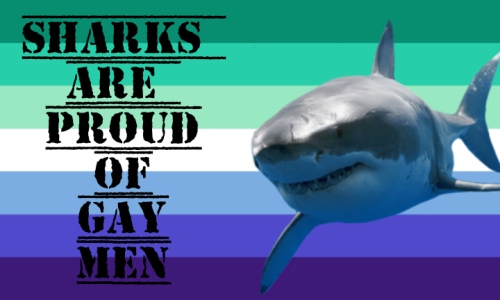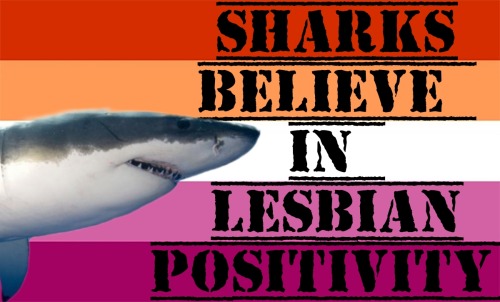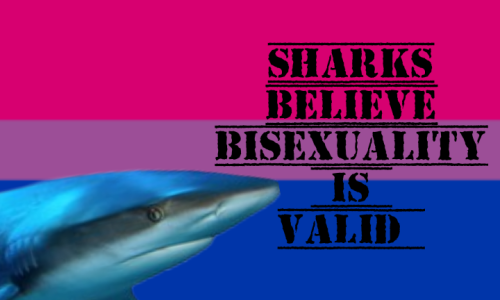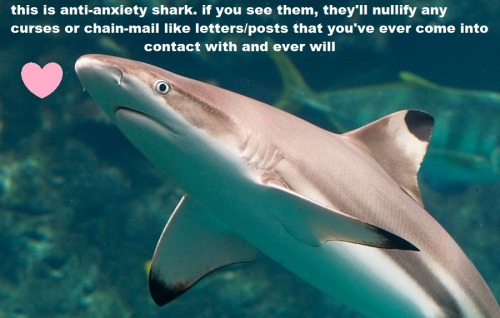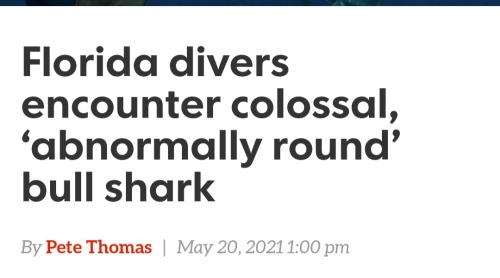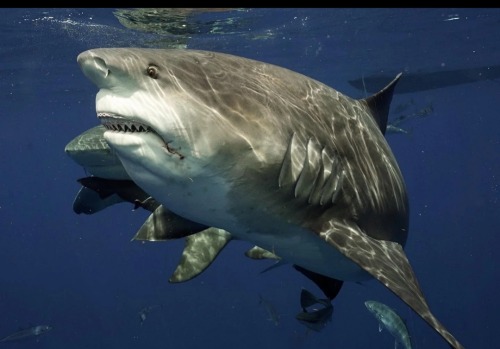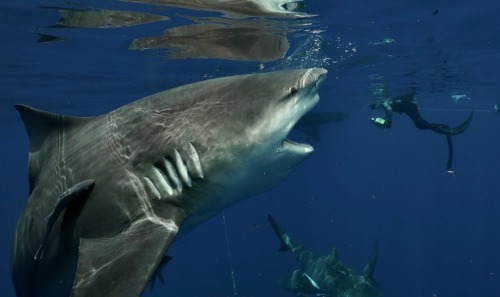Sharks - Blog Posts
🦈Phorcysic🦈
(for-KEY-zick)
Named after the ancient god of the dangers of the depths, Phorcys, Phorcysic is a gender characterized by the darker, more dangerous aspects of the ocean such as monsters, carnivorous sea life, the dark depths, and cosmic horrors like cthulu



Plain color flag by @snas-is-ness
Foreground designs by me
One of my favourite parts of working with kids is like… Very Gently subverting their idea of gendered topics… Like if a girl goes ‘no, sharks are a boy thing’ and you go “UM ACTUALLY THATS STUPID AND INCORRECT” they get freaked out, but if instead u go “Are you sure? Cause I think sharks are awesome, here’s a scale picture of a Megalodon” it’ll blow their tiny mind and they’ll be shitting themselves over it for days. 100% effective, 10/10 recommend
Do sharks cuddle?
THEY SURE FUCKIN DO.


many sharks are at least moderately social, and if a specific species of shark has the ability to breathe without actually swimming and tends to have a lot of sharks in a fairly small area, well.
they are just going to Pile. and there is simply nothing you can do about it.





Maori warrior for the character design challenge

ES|| Este conejo no es una sirena, aunque poco le falta. El conejo más aventurero del mundo, después de viajar al espacio a conocer los planetas y las estrellas, se ha aficionado a ponerse el neopreno y las aletas y salir a explorar uno de los mundos más desconocidos del planeta Tierra, el océano. Todos los dibujos están inspirados en animales marinos reales, podéis reconocer alguno de ellos? Si tuviera que escoger uno de estos animalitos para poder verlo de cerca creo que me quedaría con la ballena, la tortuga o uno de los peces globo, aunque todos me parecen bastante curiosos y el mundo marino, en general, es impresionantemente rico, aún me sorprendo descubriendo peces de colores y formas que no imaginaba posibles y, además, todavía estamos descubriendo nuevas especies. 🐋🐡🐠
EN|| This rabbit is not a mermaid, although it’s very close to one. The most adventurous rabbit in the world, after traveling to space to meet the planets and stars, he is putting on his wetsuit and fins and going out to explore one of the most unknown worlds on planet Earth, the ocean. All the drawings are inspired by real marine animals, can you recognize any of them? If I had to choose one of these little animals to see up close, I think I’d choose the blue whale, the turtle or one of the puffer fish, although all the creatures in there seem quite interesting to me and the marine world, in general, is impressively rich, I still surprise myself by discovering fish of colors and shapes that I did not imagine possible and, furthermore, we are still discovering new species. 🐋🐡🐠

EN|| Sharks are one of the most endangered animals on planet Earth, it’s estimated that in the last 50 years their population has been reduced by 70%. There’re 17 different species of shark in danger of extinction, like this one in the illustration, the Carcharias Taurus. This problem is especially significant in the Atlantic where fishing fleets can deploy 1,200 km of fishing lines with 28,000 hooks where all kinds of animals are trapped, especially sharks. Furthermore there’s also the indiscriminate fishing of the babys, which, taking into account that most shark species are characterized by having a low reproductive rate, a slow growth rate and late sexual maturation, makes it impossible for sharks to overcome their population decline, making them very susceptible to overfishing. On the other hand, climate change also affects sharks, the water temperature is increasing, the oxygen content of the water is decreasing, especially in coastal areas, and the waters are becoming more acidic. One of the main reasons why protection measures have not been put in place for these species is because the shark meat market has many economic interests, since it’s used for cosmetics, nutrition products and food. Sharks, due to their importance in the food chain, play a fundamental role in the sustainability of marine life and in the ability of these ecosystems to mitigate and adapt to climate change. Protecting them has to be a priority! 🦈 Information from @greenpeace_esp @greenpeace
ES|| Los tiburones son uno de los animales más amenazados del planeta Tierra, se calcula que en los últimos 50 años su población se ha reducido un 70%. Hay 17 especies distintas de tiburón en peligro de extinción, como este de la ilustración, el Carcharias Taurus, también llamado tiburón Toro o “Solraig clapejat” en catalán. Este problema es especialmente significativo en el Atlántico donde la flotas pesqueras pueden llegar a desplegar 1.200 km de líneas de pesca con 28.000 anzuelos donde quedan atrapados todo tipo de animales, sobretodo tiburones. A todo esto se le añade la pesca indiscriminada de crías, que teniendo en cuenta que la mayoría de especies de tiburón se caracterizan por tener una baja reproductividad, una tasa de crecimiento lenta y una maduración sexual tardía, hace imposible que los tiburones se sobrepongan al declive de su población haciéndolos muy susceptibles a la sobrepesca. Por otro lado el cambio climático también afecta a los tiburones, la temperatura del agua esta aumentando, el contenido de oxigeno del agua esta disminuyendo sobretodo en las zonas costeras y las aguas se están acidificando. Uno de los principales motivos por los que no se han creado medidas de protección para estas especies es porque el mercado de la carne de tiburón mueve muchos intereses económicos, ya que se usa para cosméticos, productos de nutrición y para alimentación. Los tiburones, debido a su importancia en la cadena trófica, tienen un papel fundamental en la sostenibilidad de la vida marina y en la capacidad de estos ecosistemas para mitigar y adaptarse al cambio climático. Protegerlos tiene que ser una prioridad!🦈 Información de @greenpeace_esp @greenpeace

ES|| Los tiburones están gravemente amenazados (incluso hay muchas especies en peligro de extinción) esto es debido sobretodo a su pesca indiscriminada para vender sus aletas. Y, aunque parezca mentira Europa contribuye enormemente y es una zona caliente de comercio de aleta de tiburón. Desde 2003 el finning está prohibido en Europa, y desde 2013 se permite pescar algunas especies de tiburones pero sin descartar el cuerpo. Sin embargo, la legislación europea sigue permitiendo el comercio de aletas a granel de especies no protegidas. Cuando se transportan solo las aletas la identificación de la especie es muy difícil, especialmente porque los envíos suelen mezclar diferentes tipos de ellas, lo que da lugar a que se comercie fácilmente con aletas de especies protegidas y de ejemplares capturados de forma ilegal. Los tiburones están en la cúspide de la cadena trófica y juegan un papel fundamental en el equilibrio marino, regulando y equilibrando la vida que hay en ellos y ayudando a preservar sus ecosistemas. Evitar la catástrofe medioambiental que supondría la desaparición de los tiburones pasa por poner freno a este lucrativo negocio. Para ello es necesario que Europa deje de exportar aletas de tiburón y no facilite el comercio a través de su territorio. Solo quedan 4 días para que finalice el termino para firmar la iniciativa ciudadana europea para proponer un cambio legislativo que prohíba el comercio de la aleta de tiburón. 🦈 Corred, animaros a firmar! Podéis encontrar el enlace y toda la información en @stopfinningeu_spain @stopfinningeu Os dejo la ilustración de un tiburón toro (especie en peligro de extinción) que quería hacer para evidenciar la belleza de los tiburones y el mundo marino, además de dar a conocer esta lucha. Más adelante os la enseño acabada! Información extraída de @stopfinningeu_spain
EN|| Sharks are seriously threatened (there are even many species in danger of extinction) this is mainly due to their indiscriminate fishing to sell their fins. And, oddly enough, Europe contributes enormously and is a hot spot for the shark fin trade. Since 2003 finning has been prohibited in Europe, and since 2013 it has been allowed to fish some species of sharks but without discarding the rest of the body. However, the European legislation continues to allow the trade of fins of non-protected species. When only the fins are transported, the identification of the species is very difficult, especially as shipments often mix different types of fins, leading to easy trade in fins from protected species and illegally caught fins. Sharks are at the top of the food chain and play a fundamental role in the marine balance, regulating and balancing the life in them and helping to preserve their ecosystems. Avoiding the environmental catastrophe that would mean the disappearance of sharks involves putting a stop to this lucrative business. This requires Europe to stop exporting shark fins and not facilitate trade through its territory. There are only 4 days left before the end of the term to sign the European citizens initiative to propose a legislative change that prohibits the shark fin trade. 🦈 Run, I encourage you to sign! You can find the link and all the information at @stopfinningeu I leave you with the illustration of a sand tiger shark (endangered species) that I wanted to do to highlight the beauty of sharks and the marine world, as well as shine a light on this fight. Later on I will show you this illustration finished!
I clicked thinking this was just a silly little comic but no, it wasn’t. However it’s super crucial to spread the message!
People still seriously kill sharks like this!? I can’t believe this!! Sharks are already treated badly enough!

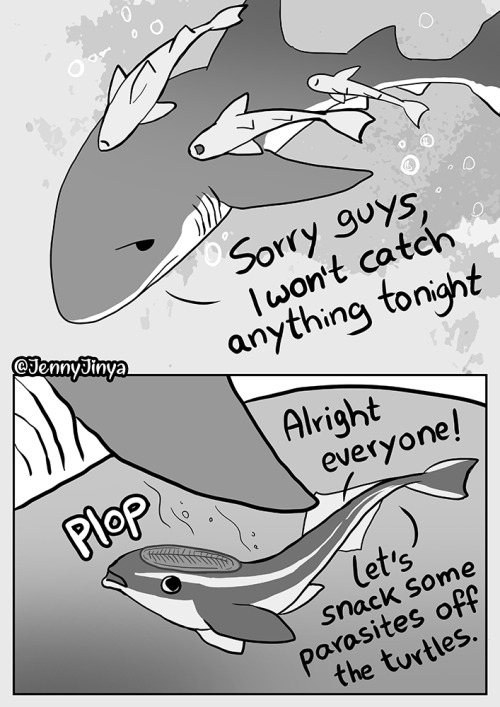
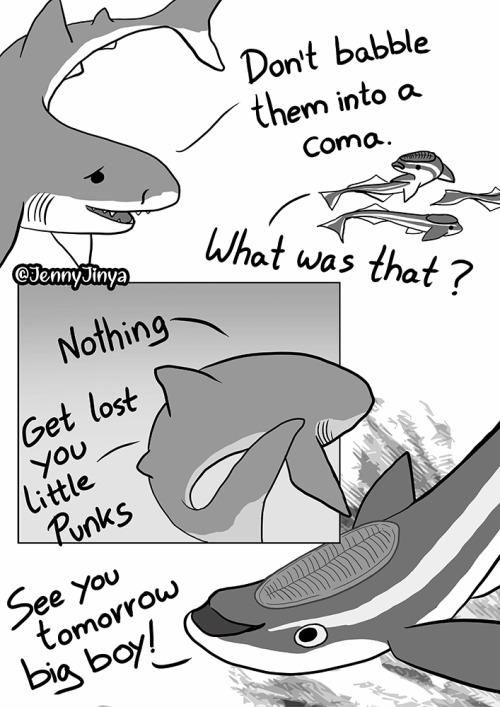
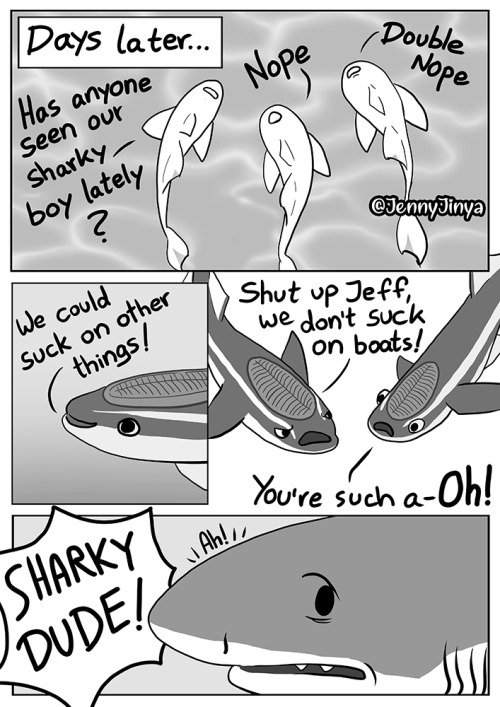


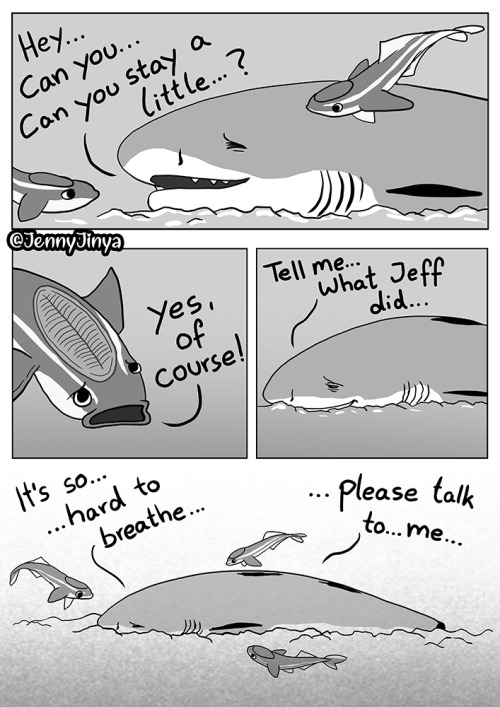

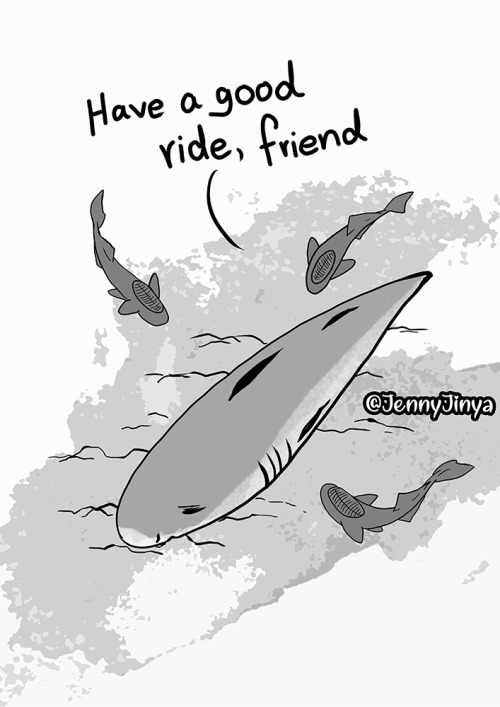




Some posters I did. Naughtily Nautical.


Leopard shark makes world-first switch from sexual to asexual reproduction
A leopard shark in an Australian aquarium has reproduced asexually after being separated from her mate.
It is the first reported case of a shark switching from sexual to asexual or parthenogenetic reproduction and only the third reported case among all vertebrate species.
The leopard shark, Leonie, was captured in the wild in 1999 and introduced to a male shark at the Reef HQ aquarium in Townsville, Queensland, in 2006. Leopard sharks are also known as zebra sharks.
One of the baby sharks born to leopard sharks at Reef HQ aquarium in Townsville, who have produced live young through asexual reproduction. Photograph: Tourism and Events Queensland
Leonie, the world’s first shark known to have switched from sexual to asexual reproduction, at Reef HQ aquarium in Townsville. Photograph: Tourism and Events Queensland
"dolphins are completely evil" I actually don't think we should assign human morality to animals with no concept of law or civilisation with an intelligence roughly equating to that of a toddler
"sharks are good and dolphins are evil XD" guys undoing the shark stigma does not mean creating a new one. calling endangered animals evil isn't the Science Own you think it is
Ocean Ramsey and her team encountered this 20 ft Great White Shark near the island of Oahu, Hawaii. It is believed to be the biggest ever recorded

Roll cake sharks 🍓🦈
This school of scalloped hammerheads was not a sight we expected to see, but what a sight it was! Experts are actually unsure why scalloped hammerheads school, but some theorize they school this way as juveniles, and continue the behavior into young adulthood!
